Navigation
Install the app
How to install the app on iOS
Follow along with the video below to see how to install our site as a web app on your home screen.
Note: This feature may not be available in some browsers.
More options
You are using an out of date browser. It may not display this or other websites correctly.
You should upgrade or use an alternative browser.
You should upgrade or use an alternative browser.
Research Random Footy History article thread (Trove/Google etc)
- Thread starter Supermercado
- Start date
- Tagged users None
ABC Article about the Santa Teresa oval project
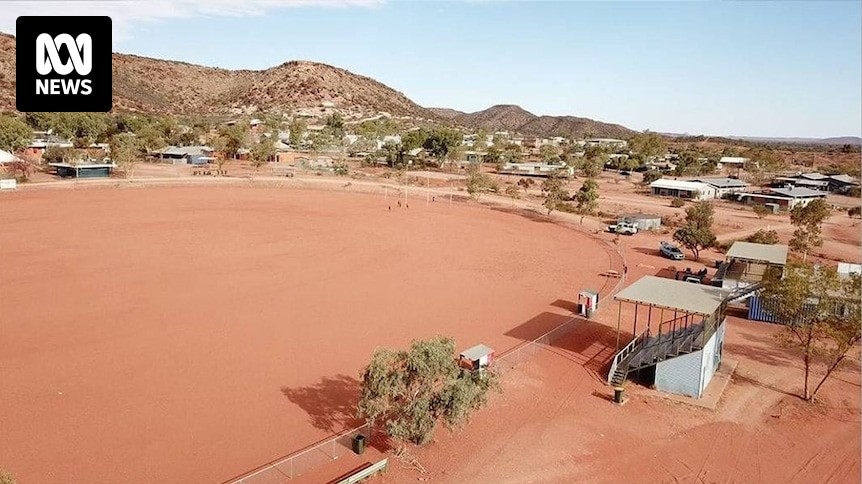
 www.abc.net.au
www.abc.net.au
'Grassing the oval would change this community': MCG goalposts help transform dusty NT oval
With support of the Melbourne Football Club, Melbourne Cricket Club and the MCG, Santa Teresa residents transform their once dusty football oval into a lush, green paddock.
Les Malone
Norm Smith Medallist
- Jul 28, 2019
- 5,752
- 6,279
- AFL Club
- GWS
I wrote this under the name Aligee 18 months ago, interestingly it also has some historical references to the beginning of the drop punt which i did not realize until a fair way into researching it.
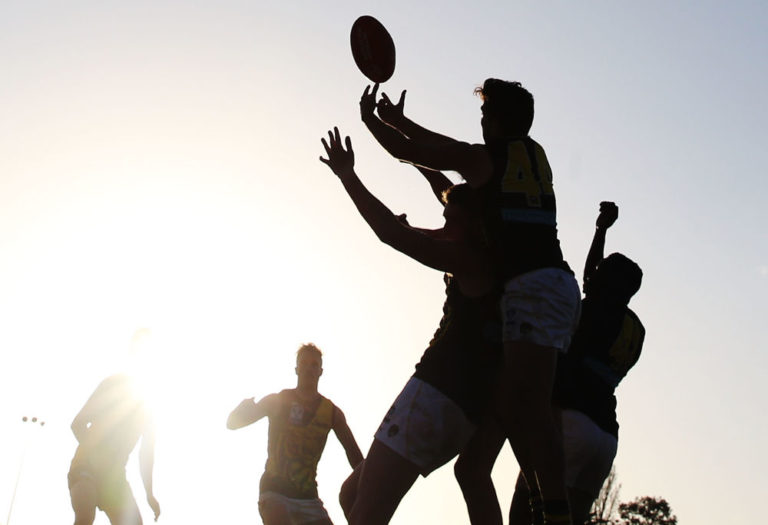
We have a saying in Australian football, if you are using the ball around the flanks and not straight through the middle of the ground you are going ‘via the cape’.
This article traces one footballing family’s generational trans-versing of the country before ultimately playing in premierships at VFL level, although truth be known it may or may not have been their ultimate football ambition or even fondest football moment.
James ‘Tuck’ Metherell was born in Tavistock West Devon in 1869 and immigrated to Australia leaving Plymouth and ending up in Port Adelaide with his parents at the age of 15 in 1883.
They, like thousands of Cornish miners, headed to Moonta or ‘little Cornwall’ as it was known on the Yorke Peninsula in South Australia to mine copper. It was said that Moonta in the 1920s was more Cornish in customs and culture than Cornwall itself.
Tuck, who was a ruckman, played football for Moonta Turks. The Turks were formed in 1876 and dominated the Yorke Peninsula league in the 1890s. In 1893 Tuck received a call up from the Norwood Redlegs as did several of his Moonta teammates. In 1894 Norwood won the premiership even though being outsiders in the last three games of the year and Tuck was judged by ‘Goalfront’ to be “the best ruckman of the year”. ‘Onlooker’ in The Express and Telegraph said: “The Norwoods had no harder ‘grafter’ than Metherell, whose remarkably fine ruck play deserves all the praise that can be bestowed upon it.”
In 1895, the Norwood football club was gutted by men moving West after Paddy Hannan found gold around what was to become Kalgoorlie towards the end of 1893.
To quote Geoffrey Blainey – “South Australia rich in copper, dreamed of gold,” from that premiership team ‘Tuck’ Metherell was lured to the Golden West along with a host of his talented teammates including Jimmy Poglase, Jack Cullen, Charlie Atkins, Jim Mullaney, Tom Coombe, Ted Hantke, Jack Slee and Os Bertram.
Despite the departures Norwood made a football trip East in a mid-season visit to Victoria, Norwood lost to Melbourne, drew with Collingwood and defeated Essendon.
From what I can ascertain the Metherells took a passage on a ship from Adelaide that was actually bound for London and disembarked at Albany where they walked to Kalgoorlie with their belongings like thousands of others.
By June of 1895 Tuck Metherell was vice captain of a new team called the Great Boulder football club and in 1900 became involved in a club called the Warriors which was comprised mainly of men from Moonta. They would eventually be morphed with the famous Mines Rovers of Boulder.
If anyone is interested you might want to google the Cornwall Hotel built in Boulder in 1898, which was built out of local quarried stone mined by Cornishman primarily from Moonta which would be the ‘spiritual’ home to the Mines Rovers for many years prior to the clubs own licensed premises.
Cornishman were in great demand as miners and were generally compensated with higher wages when seeking employment, although most men at Kalgoorlie wanted to stake their own claims.
At one stage in 1903 five Metherell’s were playing for the Warriors, brothers Tuck, Bill (Tish), Samuel (Doc), George and Edward (Bant), by the early 1920s a new club called Moonta Turks sought affiliation to the Goldfields league. It was a club named after the old club in Moonta SA and the huge number of Cornish miners who came from there, Mr Edward Metherell was its inaugural coach and at least one of his sons played.
Tucks brother Bill who had represented WA in the 1908 Australasian championships had moved to Perth and his two sons Len and Jack were playing junior football at Subiaco where Geelong cast an eye over the boys, Len Metherell started his career in 1927 at Western Australian club Subiaco and topped their goalkicking with 49 goals.
He went on to play 45 games for the club before transferring to Geelong where he would play in the 1931 Premiership and coach the club in 1941. His younger brother Jack would join Geelong in 1932, he topped Geelong’s goalkicking in 1934, 1936 and 1937.
His tally of 71 goals in 1937 saw him finish one short of Gordon Coventry who topped the league.
Metherell kicked four goals in that year’s grand final and helped the Cats to their third flag, Jack Metherell went on to captain coach a number of premierships teams at North Hobart, coach Tasmanian rep sides and was eventually inducted into AFL Tasmania’s hall of fame.
Geelong refused to clear Metherell to North Hobart even after the intervention of Tasmanian premier Albert Ogilvie, meaning that Metherell was forced to sit out the 1938 season and coach from the sidelines. When he finished coaching he took up umpiring in the 1960s.
I might add something else about the Metherell boys and kicking, Len Metherell was described in the Sporting Globe as “doing a kick that is all his own, and I fancy he and his brother are the only exponents of it. The kick is used for passing, and is a punt. The ball is dropped on to the toe and travels through the air like a drop-kick. The astonishing thing about this kick is that Metherell is so accurate with it.”
Metherell when questioned stated that he learnt it from his father – and yes they are actually talking about the drop punt here.
I will just say until doing a bit of basic research I did not know the Metherell brothers and extended family existed, maybe only dedicated Cats fans had heard of them.
I just happened to stumble on the name looking for something else, they are just one example of literally thousands of families who also happened to be involved with the game of Australian football whom made their way to the Kalgoorlie goldfields in the mid 1890s whilst the Eastern states were in a grip of a huge economic depression.

From West Devon to Geelong, via the cape
We have a saying in Australian football, if you are using the ball around the flanks and not straight through the middle of the…
www.theroar.com.au
We have a saying in Australian football, if you are using the ball around the flanks and not straight through the middle of the ground you are going ‘via the cape’.
This article traces one footballing family’s generational trans-versing of the country before ultimately playing in premierships at VFL level, although truth be known it may or may not have been their ultimate football ambition or even fondest football moment.
James ‘Tuck’ Metherell was born in Tavistock West Devon in 1869 and immigrated to Australia leaving Plymouth and ending up in Port Adelaide with his parents at the age of 15 in 1883.
They, like thousands of Cornish miners, headed to Moonta or ‘little Cornwall’ as it was known on the Yorke Peninsula in South Australia to mine copper. It was said that Moonta in the 1920s was more Cornish in customs and culture than Cornwall itself.
Tuck, who was a ruckman, played football for Moonta Turks. The Turks were formed in 1876 and dominated the Yorke Peninsula league in the 1890s. In 1893 Tuck received a call up from the Norwood Redlegs as did several of his Moonta teammates. In 1894 Norwood won the premiership even though being outsiders in the last three games of the year and Tuck was judged by ‘Goalfront’ to be “the best ruckman of the year”. ‘Onlooker’ in The Express and Telegraph said: “The Norwoods had no harder ‘grafter’ than Metherell, whose remarkably fine ruck play deserves all the praise that can be bestowed upon it.”
In 1895, the Norwood football club was gutted by men moving West after Paddy Hannan found gold around what was to become Kalgoorlie towards the end of 1893.
To quote Geoffrey Blainey – “South Australia rich in copper, dreamed of gold,” from that premiership team ‘Tuck’ Metherell was lured to the Golden West along with a host of his talented teammates including Jimmy Poglase, Jack Cullen, Charlie Atkins, Jim Mullaney, Tom Coombe, Ted Hantke, Jack Slee and Os Bertram.
Despite the departures Norwood made a football trip East in a mid-season visit to Victoria, Norwood lost to Melbourne, drew with Collingwood and defeated Essendon.
From what I can ascertain the Metherells took a passage on a ship from Adelaide that was actually bound for London and disembarked at Albany where they walked to Kalgoorlie with their belongings like thousands of others.
By June of 1895 Tuck Metherell was vice captain of a new team called the Great Boulder football club and in 1900 became involved in a club called the Warriors which was comprised mainly of men from Moonta. They would eventually be morphed with the famous Mines Rovers of Boulder.
If anyone is interested you might want to google the Cornwall Hotel built in Boulder in 1898, which was built out of local quarried stone mined by Cornishman primarily from Moonta which would be the ‘spiritual’ home to the Mines Rovers for many years prior to the clubs own licensed premises.
Cornishman were in great demand as miners and were generally compensated with higher wages when seeking employment, although most men at Kalgoorlie wanted to stake their own claims.
At one stage in 1903 five Metherell’s were playing for the Warriors, brothers Tuck, Bill (Tish), Samuel (Doc), George and Edward (Bant), by the early 1920s a new club called Moonta Turks sought affiliation to the Goldfields league. It was a club named after the old club in Moonta SA and the huge number of Cornish miners who came from there, Mr Edward Metherell was its inaugural coach and at least one of his sons played.
Tucks brother Bill who had represented WA in the 1908 Australasian championships had moved to Perth and his two sons Len and Jack were playing junior football at Subiaco where Geelong cast an eye over the boys, Len Metherell started his career in 1927 at Western Australian club Subiaco and topped their goalkicking with 49 goals.
He went on to play 45 games for the club before transferring to Geelong where he would play in the 1931 Premiership and coach the club in 1941. His younger brother Jack would join Geelong in 1932, he topped Geelong’s goalkicking in 1934, 1936 and 1937.
His tally of 71 goals in 1937 saw him finish one short of Gordon Coventry who topped the league.
Metherell kicked four goals in that year’s grand final and helped the Cats to their third flag, Jack Metherell went on to captain coach a number of premierships teams at North Hobart, coach Tasmanian rep sides and was eventually inducted into AFL Tasmania’s hall of fame.
Geelong refused to clear Metherell to North Hobart even after the intervention of Tasmanian premier Albert Ogilvie, meaning that Metherell was forced to sit out the 1938 season and coach from the sidelines. When he finished coaching he took up umpiring in the 1960s.
I might add something else about the Metherell boys and kicking, Len Metherell was described in the Sporting Globe as “doing a kick that is all his own, and I fancy he and his brother are the only exponents of it. The kick is used for passing, and is a punt. The ball is dropped on to the toe and travels through the air like a drop-kick. The astonishing thing about this kick is that Metherell is so accurate with it.”
Metherell when questioned stated that he learnt it from his father – and yes they are actually talking about the drop punt here.
I will just say until doing a bit of basic research I did not know the Metherell brothers and extended family existed, maybe only dedicated Cats fans had heard of them.
I just happened to stumble on the name looking for something else, they are just one example of literally thousands of families who also happened to be involved with the game of Australian football whom made their way to the Kalgoorlie goldfields in the mid 1890s whilst the Eastern states were in a grip of a huge economic depression.
Last edited:
Grand Final Day 1907 Norwood v Ports
What did they use the track for?

The Critic 25 September 1907
The match on Saturday between Norwood and Port for the premiership of The S.A. Football League was in every respect a fitting climax to the most successful season in the records of the game in this State. Although additional seats had been erected on the track in front of the pavilions to accommodate 2,500, the Oval was taxed to its utmost, a huge crowd of about 25,000 people being in attendance to witness the game, and they were rewarded by seeing one of the finest displays given in Adelaide for years. The sum of £510 was taken at the turnstiles, & two records were broken, the previous best attendance at a club match being between 20,000 and 22,000 in the meeting of North Adelaide and Port for the premiership last year, the taking for that game being £486. The Loco. Band were in attendance at 1.45pm, -and their efforts were much appreciated by the onlookers, also at half and three-quarter time, and it is hoped that the League will see its way clear to have a band present at all the big matches next year.
Norwood were perhaps the favourites at the commencement of the game, but Port Adelaide were first off the mark, and had secured lead of a couple of goals and several minors before the reds commenced operations. In the initial period the seasiders were seen at their best, playing fast and combined, quick dashing runs and accurate passing being the most prominent features in their play, and above all every man took no risk of losing his kick.
Norwood, on the other hand, hung on to their men too much, and although their display was as fast as their opponents, the passing was not nearly so accurate, and more often than not they neglected to kick at the right moment, with the result that the ball was frequently wrested from them and quickly on its way by means of a long quick punt to the other end of the ground.
In the second quarter the Reds started to settle down to their game proper, and with the black-and-whites still showing good form, a ding-dong go was the result, and worked the enormous crowd into a tremendous pitch of enthusiasm. Towering high above, every player on the field was Stoddart, of Norwood, who playing half-back in the centre, provided what was probably the finest exhibition of an individual display yet seen in a premiership game in Adelaide. His high marking, irresistible rushes against apparently overwhelming odds. His seeming ability to be able to gather in the leather from any angle. and, above all. his remarkable long running, relieving drop kicks, and he well merited the continual storm of applause which his magnificent efforts drew forth during the whole afternoon.
On the Port side Corston, the captain, in the centre was quite the most prominent in the first half, and his fine dashes up the centre with a good long punt to finish- with being the start of many severe and telling onslaughts on the enemy’s strongholds. Strangely enough, with so many fine high markers on both sides this department of the game was not exhibited to any great extent during the afternoon, although at times some fine skyscrapers were brought off they were on the whole one feature that was missing in an otherwise very attractive afternoon's play. Port Adelaide still maintained a useful lead at half-time, and their supporters were grimly confident, whereas Norwood, strong in the knowledge of the form displayed by their favourites in the two previous semi-finals, were confident of the ability of the reds to prevail at the finish.
Such was the case. The ultimate winners absolutely took charge of the third quarter ; in fact, there only seemed to be one side in it. By beautiful. Accurate fast concerted play they kept up a continual assault on the Port goal, and added 5 goals and several minors, and at the end of the quarter had established a winning lead of 27 points. To those people who had the good fortune to witness the Norwood’s' wonderful recovery in the last quarter of the 1904 premiership match, last Saturday's effort must be described as simply a repetition, but to those spectators who only had the pleasure of seeing the last match it was phenomenal, every telling feature of our loved Australian game being introduced, and with most telling effect. Port worked gamely and hard to resist the invaders, but to no effect. It was Norwood’s quarter, and with it the premiership of 1907.
At "Lemons'' Mr. Norden, the central umpire, who up to that period had given a fine interpretation of the rules, was seen to be in trouble, and had to be removed to the dressing-room. He was in a state of total collapse, the fast strenuous nature of the game having overtaxed his strength, and Drs. Benson and McAree refused to allow him to continue his duties, although lie gamely requested to be allowed to go on the field again. This's was impossible, and it is . exceedingly doubtful if this very capable adjudicator will be able to take up his umpiring duties again. He improved a little on Saturday night, and after a quiet day on Sunday, left in the evening by the mail train for Melbourne. The sympathy of all lovers of the game will lie extended to Mr. Norden in his illness, as he by his splendid umpiring made many friends in Adelaide. and it is to be hoped his recovery will he rapid and permanent. Mr. G. Karle. who had been stationed on the boundary, took up Mr. Norden's work, and Mr. Fissell was appointed to the boundary for the. rest of the game, with satisfactory results.
The last quarter requires little comment.
Norwood, with their fine lead, being quite content to keep the Ports out. The latter, however, despite several easy chances to score, being mulled, were never in the hunt. The ringing of the final bell was the signal for an outburst of enthusiasm on the part of the Norwood supporters such as has seldom been seen on the City Oval before, the victorious players being simply mobbed and overwhelmed with congratulations on their way to the dressing-room.
That The best team secured the 1907 premiership goes without saying. but the red-and-blues had manly rivals in Port Adelaide for the honour, and no other club could dispute their undoubted claim for the position of runners-up.
Stoddart was the- best player on the- ground, and was well backed up by Lewis (2). Miller (2), L. Hill, Gwynne, Gibbons, Balir (who handled his men well), and Townsend.
For the losers Corston and Mack divided the honours for the best player, and utensil, Pope, Hosking, James, Earle, Selby, Beare. and Strawns
were prominent during most part of the afternoon.
Next Saturday Norwood meet Carlton at the Oval for the Premiership of Australia, and a battle royal should ensue with another bumper gate. Last
Saturday Carlton secured the premiership of Victoria- by defeating South Melbourne by 5 points in the presence of nearly 45,000 spectators.
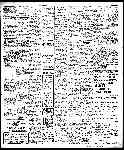
 trove.nla.gov.au
trove.nla.gov.au
What did they use the track for?
The Critic 25 September 1907
The match on Saturday between Norwood and Port for the premiership of The S.A. Football League was in every respect a fitting climax to the most successful season in the records of the game in this State. Although additional seats had been erected on the track in front of the pavilions to accommodate 2,500, the Oval was taxed to its utmost, a huge crowd of about 25,000 people being in attendance to witness the game, and they were rewarded by seeing one of the finest displays given in Adelaide for years. The sum of £510 was taken at the turnstiles, & two records were broken, the previous best attendance at a club match being between 20,000 and 22,000 in the meeting of North Adelaide and Port for the premiership last year, the taking for that game being £486. The Loco. Band were in attendance at 1.45pm, -and their efforts were much appreciated by the onlookers, also at half and three-quarter time, and it is hoped that the League will see its way clear to have a band present at all the big matches next year.
Norwood were perhaps the favourites at the commencement of the game, but Port Adelaide were first off the mark, and had secured lead of a couple of goals and several minors before the reds commenced operations. In the initial period the seasiders were seen at their best, playing fast and combined, quick dashing runs and accurate passing being the most prominent features in their play, and above all every man took no risk of losing his kick.
Norwood, on the other hand, hung on to their men too much, and although their display was as fast as their opponents, the passing was not nearly so accurate, and more often than not they neglected to kick at the right moment, with the result that the ball was frequently wrested from them and quickly on its way by means of a long quick punt to the other end of the ground.
In the second quarter the Reds started to settle down to their game proper, and with the black-and-whites still showing good form, a ding-dong go was the result, and worked the enormous crowd into a tremendous pitch of enthusiasm. Towering high above, every player on the field was Stoddart, of Norwood, who playing half-back in the centre, provided what was probably the finest exhibition of an individual display yet seen in a premiership game in Adelaide. His high marking, irresistible rushes against apparently overwhelming odds. His seeming ability to be able to gather in the leather from any angle. and, above all. his remarkable long running, relieving drop kicks, and he well merited the continual storm of applause which his magnificent efforts drew forth during the whole afternoon.
On the Port side Corston, the captain, in the centre was quite the most prominent in the first half, and his fine dashes up the centre with a good long punt to finish- with being the start of many severe and telling onslaughts on the enemy’s strongholds. Strangely enough, with so many fine high markers on both sides this department of the game was not exhibited to any great extent during the afternoon, although at times some fine skyscrapers were brought off they were on the whole one feature that was missing in an otherwise very attractive afternoon's play. Port Adelaide still maintained a useful lead at half-time, and their supporters were grimly confident, whereas Norwood, strong in the knowledge of the form displayed by their favourites in the two previous semi-finals, were confident of the ability of the reds to prevail at the finish.
Such was the case. The ultimate winners absolutely took charge of the third quarter ; in fact, there only seemed to be one side in it. By beautiful. Accurate fast concerted play they kept up a continual assault on the Port goal, and added 5 goals and several minors, and at the end of the quarter had established a winning lead of 27 points. To those people who had the good fortune to witness the Norwood’s' wonderful recovery in the last quarter of the 1904 premiership match, last Saturday's effort must be described as simply a repetition, but to those spectators who only had the pleasure of seeing the last match it was phenomenal, every telling feature of our loved Australian game being introduced, and with most telling effect. Port worked gamely and hard to resist the invaders, but to no effect. It was Norwood’s quarter, and with it the premiership of 1907.
At "Lemons'' Mr. Norden, the central umpire, who up to that period had given a fine interpretation of the rules, was seen to be in trouble, and had to be removed to the dressing-room. He was in a state of total collapse, the fast strenuous nature of the game having overtaxed his strength, and Drs. Benson and McAree refused to allow him to continue his duties, although lie gamely requested to be allowed to go on the field again. This's was impossible, and it is . exceedingly doubtful if this very capable adjudicator will be able to take up his umpiring duties again. He improved a little on Saturday night, and after a quiet day on Sunday, left in the evening by the mail train for Melbourne. The sympathy of all lovers of the game will lie extended to Mr. Norden in his illness, as he by his splendid umpiring made many friends in Adelaide. and it is to be hoped his recovery will he rapid and permanent. Mr. G. Karle. who had been stationed on the boundary, took up Mr. Norden's work, and Mr. Fissell was appointed to the boundary for the. rest of the game, with satisfactory results.
The last quarter requires little comment.
Norwood, with their fine lead, being quite content to keep the Ports out. The latter, however, despite several easy chances to score, being mulled, were never in the hunt. The ringing of the final bell was the signal for an outburst of enthusiasm on the part of the Norwood supporters such as has seldom been seen on the City Oval before, the victorious players being simply mobbed and overwhelmed with congratulations on their way to the dressing-room.
That The best team secured the 1907 premiership goes without saying. but the red-and-blues had manly rivals in Port Adelaide for the honour, and no other club could dispute their undoubted claim for the position of runners-up.
Stoddart was the- best player on the- ground, and was well backed up by Lewis (2). Miller (2), L. Hill, Gwynne, Gibbons, Balir (who handled his men well), and Townsend.
For the losers Corston and Mack divided the honours for the best player, and utensil, Pope, Hosking, James, Earle, Selby, Beare. and Strawns
were prominent during most part of the afternoon.
Next Saturday Norwood meet Carlton at the Oval for the Premiership of Australia, and a battle royal should ensue with another bumper gate. Last
Saturday Carlton secured the premiership of Victoria- by defeating South Melbourne by 5 points in the presence of nearly 45,000 spectators.
THE UMPIRE INTERVIEWED. - The Express and Telegraph (Adelaide, SA : 1867 - 1922) - 23 Sep 1907
Mr. Norden, when seen with reference to the match, and prior to his return to Melbourne, said Saturday's game was the fastest he had ever taken charge of. He ...
Last edited:
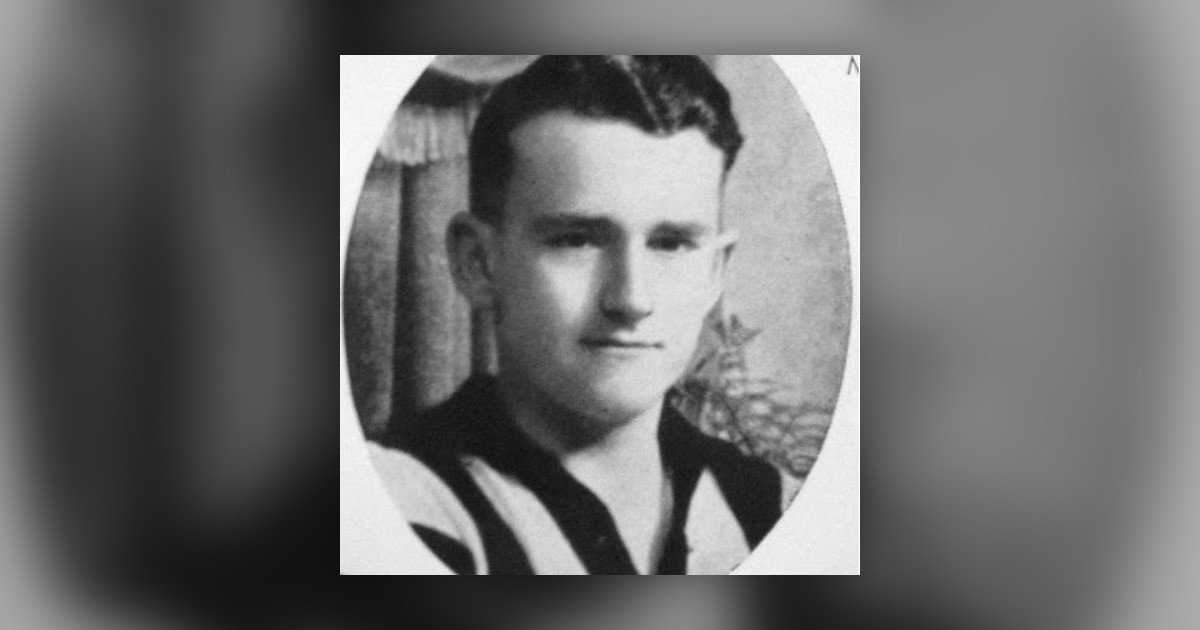
3UZ Des Fothergill with Kevin Bartlett 15 Sep, 1982 - The 3AW Archive
Hosting 3UZ's Sportstalk program in 1982, Kevin Bartlett spoke with 1940's Collingwood Brownlow Medal Winner Des Fothergill. Thanks to Michael Morgan for sending through this audio. Thanks to boylesfootballphotos.net.au for the photo
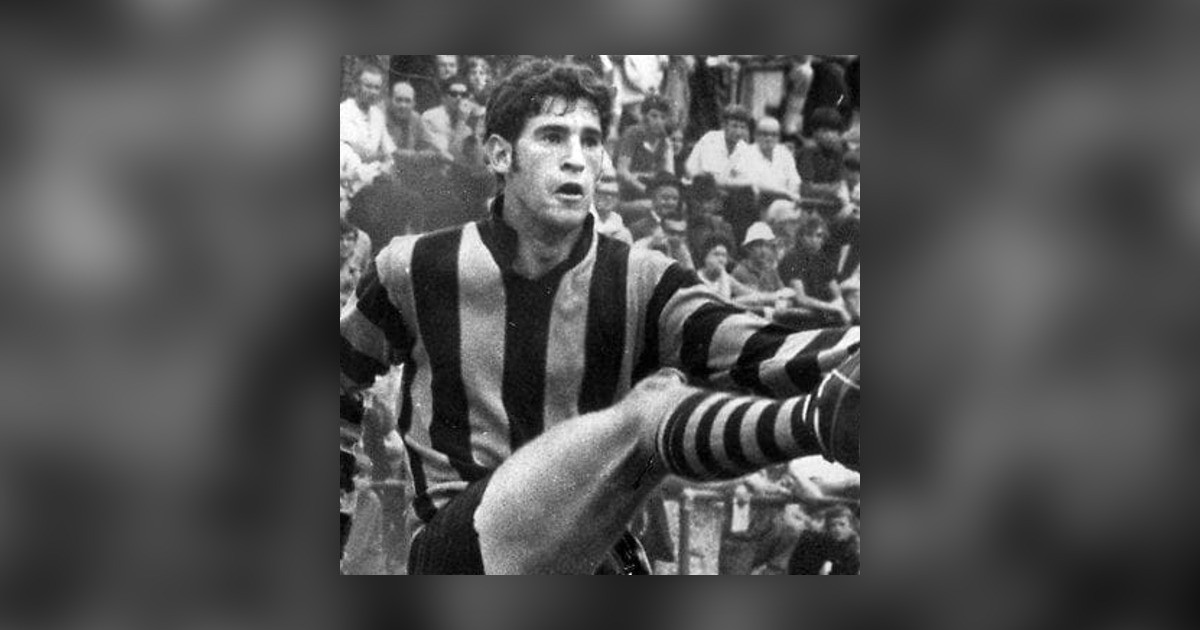
3AW - Football call Bill Jacobs, Harry Beitzel. Peter Hudson kicks 8.3. - The 3AW Archive
25 Aug, 1973. Hawthorn Football Club's Peter Hudson has returned from Tasmania. In the first round of last season, he seriously injured his knee. It was a possible career ending injury. But it wasn't. Here, as called by Harry Beitzel and Bill Jacobs, Peter kicks eight goals and three behinds...

3AW - Harry Beitzel interviews Fitzroy Football Club fan Bert Newton. 01 Jun, 1979 - The 3AW Archive
After a few good wins for the 1979 season, and after a big win against North Melbourne in round 8, Harry Beitzel interviews Fitzroy fan Bert Newton about his thoughts of, and hopes for the future of the Fitzroy Lions. Audio supplied by Michael Morgan
Last edited:
Cycling, it seems!: https://en.wikipedia.org/wiki/Adelaide_OvalGrand Final Day 1907 Norwood v Ports
What did they use the track for?
View attachment 953758
The Critic 25 September 1907
The match on Saturday between Norwood and Port for the premiership of The S.A. Football League was in every respect a fitting climax to the most successful season in the records of the game in this State. Although additional seats had been erected on the track in front of the pavilions to accommodate 2,500, the Oval was taxed to its utmost, a huge crowd of about 25,000 people being in attendance to witness the game, and they were rewarded by seeing one of the finest displays given in Adelaide for years. The sum of £510 was taken at the turnstiles, & two records were broken, the previous best attendance at a club match being between 20,000 and 22,000 in the meeting of North Adelaide and Port for the premiership last year, the taking for that game being £486. The Loco. Band were in attendance at 1.45pm, -and their efforts were much appreciated by the onlookers, also at half and three-quarter time, and it is hoped that the League will see its way clear to have a band present at all the big matches next year.
Norwood were perhaps the favourites at the commencement of the game, but Port Adelaide were first off the mark, and had secured lead of a couple of goals and several minors before the reds commenced operations. In the initial period the seasiders were seen at their best, playing fast and combined, quick dashing runs and accurate passing being the most prominent features in their play, and above all every man took no risk of losing his kick.
Norwood, on the other hand, hung on to their men too much, and although their display was as fast as their opponents, the passing was not nearly so accurate, and more often than not they neglected to kick at the right moment, with the result that the ball was frequently wrested from them and quickly on its way by means of a long quick punt to the other end of the ground.
In the second quarter the Reds started to settle down to their game proper, and with the black-and-whites still showing good form, a ding-dong go was the result, and worked the enormous crowd into a tremendous pitch of enthusiasm. Towering high above, every player on the field was Stoddart, of Norwood, who playing half-back in the centre, provided what was probably the finest exhibition of an individual display yet seen in a premiership game in Adelaide. His high marking, irresistible rushes against apparently overwhelming odds. His seeming ability to be able to gather in the leather from any angle. and, above all. his remarkable long running, relieving drop kicks, and he well merited the continual storm of applause which his magnificent efforts drew forth during the whole afternoon.
On the Port side Corston, the captain, in the centre was quite the most prominent in the first half, and his fine dashes up the centre with a good long punt to finish- with being the start of many severe and telling onslaughts on the enemy’s strongholds. Strangely enough, with so many fine high markers on both sides this department of the game was not exhibited to any great extent during the afternoon, although at times some fine skyscrapers were brought off they were on the whole one feature that was missing in an otherwise very attractive afternoon's play. Port Adelaide still maintained a useful lead at half-time, and their supporters were grimly confident, whereas Norwood, strong in the knowledge of the form displayed by their favourites in the two previous semi-finals, were confident of the ability of the reds to prevail at the finish.
Such was the case. The ultimate winners absolutely took charge of the third quarter ; in fact, there only seemed to be one side in it. By beautiful. Accurate fast concerted play they kept up a continual assault on the Port goal, and added 5 goals and several minors, and at the end of the quarter had established a winning lead of 27 points. To those people who had the good fortune to witness the Norwood’s' wonderful recovery in the last quarter of the 1904 premiership match, last Saturday's effort must be described as simply a repetition, but to those spectators who only had the pleasure of seeing the last match it was phenomenal, every telling feature of our loved Australian game being introduced, and with most telling effect. Port worked gamely and hard to resist the invaders, but to no effect. It was Norwood’s quarter, and with it the premiership of 1907.
At "Lemons'' Mr. Norden, the central umpire, who up to that period had given a fine interpretation of the rules, was seen to be in trouble, and had to be removed to the dressing-room. He was in a state of total collapse, the fast strenuous nature of the game having overtaxed his strength, and Drs. Benson and McAree refused to allow him to continue his duties, although lie gamely requested to be allowed to go on the field again. This's was impossible, and it is . exceedingly doubtful if this very capable adjudicator will be able to take up his umpiring duties again. He improved a little on Saturday night, and after a quiet day on Sunday, left in the evening by the mail train for Melbourne. The sympathy of all lovers of the game will lie extended to Mr. Norden in his illness, as he by his splendid umpiring made many friends in Adelaide. and it is to be hoped his recovery will he rapid and permanent. Mr. G. Karle. who had been stationed on the boundary, took up Mr. Norden's work, and Mr. Fissell was appointed to the boundary for the. rest of the game, with satisfactory results.
The last quarter requires little comment.
Norwood, with their fine lead, being quite content to keep the Ports out. The latter, however, despite several easy chances to score, being mulled, were never in the hunt. The ringing of the final bell was the signal for an outburst of enthusiasm on the part of the Norwood supporters such as has seldom been seen on the City Oval before, the victorious players being simply mobbed and overwhelmed with congratulations on their way to the dressing-room.
That The best team secured the 1907 premiership goes without saying. but the red-and-blues had manly rivals in Port Adelaide for the honour, and no other club could dispute their undoubted claim for the position of runners-up.
Stoddart was the- best player on the- ground, and was well backed up by Lewis (2). Miller (2), L. Hill, Gwynne, Gibbons, Balir (who handled his men well), and Townsend.
For the losers Corston and Mack divided the honours for the best player, and utensil, Pope, Hosking, James, Earle, Selby, Beare. and Strawns
were prominent during most part of the afternoon.
Next Saturday Norwood meet Carlton at the Oval for the Premiership of Australia, and a battle royal should ensue with another bumper gate. Last
Saturday Carlton secured the premiership of Victoria- by defeating South Melbourne by 5 points in the presence of nearly 45,000 spectators.

THE UMPIRE INTERVIEWED. - The Express and Telegraph (Adelaide, SA : 1867 - 1922) - 23 Sep 1907
Mr. Norden, when seen with reference to the match, and prior to his return to Melbourne, said Saturday's game was the fastest he had ever taken charge of. He ...trove.nla.gov.au
Post Season Football 1915
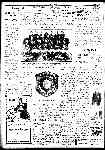
 trove.nla.gov.au
trove.nla.gov.au
Barry Davis Demonstrating the Drop Kick (early 70s)

Football - PATRIOTIC MATCH A TAME DISPLAY CARLTON (V.L PREMIERS) V. CAMP TEAM - Winner (Melbourne, Vic. : 1914 - 1917) - 29 Sep 1915
After the keen, and 'strenuous contests lately witnessed at decide the League championship, the match on the Melbourne Cricket Ground on ...
Barry Davis Demonstrating the Drop Kick (early 70s)
Last edited:
Les Malone
Norm Smith Medallist
- Jul 28, 2019
- 5,752
- 6,279
- AFL Club
- GWS
Post Season Football 1915

Football - PATRIOTIC MATCH A TAME DISPLAY CARLTON (V.L PREMIERS) V. CAMP TEAM - Winner (Melbourne, Vic. : 1914 - 1917) - 29 Sep 1915
After the keen, and 'strenuous contests lately witnessed at decide the League championship, the match on the Melbourne Cricket Ground on ...trove.nla.gov.au
Barry Davis Demonstrating the Drop Kick (early 70s)
View attachment 970976
my first season of senior football in the 1980's as a 18 year old was spent being coached by ex Carlton and East Perth great Syd Jackson who was Captain Coach who was still letting fly with drop kicks during a game, they were beautiful long kicks when he got onto them which was more often than not and i am not sure why but seemed easier to mark than drop punts
Quite effective strong kick if you land on your kicking foot on the follow through
BringBackTorps
Club Legend
- Jan 5, 2017
- 2,963
- 1,827
- AFL Club
- GWS
Drop kicks have a lower trajectory (due to the lower position of impact) than punts, so are less likely to be affected by the wind- thus their more predictable flight (if cleanly executed!) makes them easier to mark.my first season of senior football in the 1980's as a 18 year old was spent being coached by ex Carlton and East Perth great Syd Jackson who was Captain Coach who was still letting fly with drop kicks during a game, they were beautiful long kicks when he got onto them which was more often than not and i am not sure why but seemed easier to mark than drop punts
Last edited:
I know Norwood won the match, but is there another article available for it?Next Saturday Norwood meet Carlton at the Oval for the Premiership of Australia, and a battle royal should ensue with another bumper gate. Last
Saturday Carlton secured the premiership of Victoria- by defeating South Melbourne by 5 points in the presence of nearly 45,000 spectators.

THE UMPIRE INTERVIEWED. - The Express and Telegraph (Adelaide, SA : 1867 - 1922) - 23 Sep 1907
Mr. Norden, when seen with reference to the match, and prior to his return to Melbourne, said Saturday's game was the fastest he had ever taken charge of. He ...trove.nla.gov.au
I presume you're referring to the Norwood vs. Carlton game played the following week?: https://trove.nla.gov.au/newspaper/article/208969876I know Norwood won the match, but is there another article available for it?
NORWOOD DEFEAT CARLTON. - The Argus (Melbourne, Vic. : 1848 - 1957) - 30 Sep 1907
ADELAIDE, Sunday. — In the presence of about 12,000 spectators at the Adelaide oval on Saturday. Norwood, the premiers of South Australia, and Carlton, the premiers of Victoria, met to practically ...
Supermercado
The straw that stirs the drink
- Thread starter
- #164
Is that the book with a song called Camp Carrara? If so can you put a picture of that up?
Search for footballer's ear - The Canberra Times (ACT : 1926 - 1995) - 25 Mar 1985
MELBOURNE: A football match was suspended for 30 minutes on Saturday as players frantically searched the field, for part of an ear. ...
Umpire loses half an ear - The Canberra Times (ACT : 1926 - 1995) - 6 Jun 1983
MELBOURNE: A goal umpire had half an ear bitten off yesterday during a brawl at a junior football match in Melbourne. ...
Penguin Club. -
At the weekly meeting of the club committee on Monday night, it was decided to purchase a number of spare knickers to be taken to each match by the head ...
The Mail June 1927

Last edited:
Australian Football in South Africa
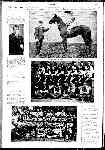
 trove.nla.gov.au
trove.nla.gov.au
Ron Shapter



Could be the same Ron Shapter in 1918

AUSTRALIAN FOOTBALL IN SOUTH AFRICA. - Leader (Melbourne, Vic. : 1862 - 1918, 1935) - 27 Oct 1900
We reproduce a group photo of two Australian teams, representing Victoria and South Australia, who played a football match at the Albert Park Oval at Durban ...
Ron Shapter


Could be the same Ron Shapter in 1918
Last edited:
- Moderator
- #169
Could be the same Ron Shapter in 1918
View attachment 1001867
It would be, he was a Queenscliff man
The First Intercolonial Match 1879
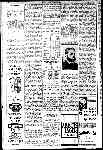
 trove.nla.gov.au
trove.nla.gov.au
Old Timers Social 1924
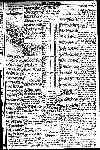
 trove.nla.gov.au
trove.nla.gov.au
Herald Sept 24

Scientific football tactics c1904 (Coll v Fitzroy)

THE FIRST INTERCOLONIAL. - The Australasian (Melbourne, Vic. : 1864 - 1946) - 16 Aug 1924
It is a far cry to 1879, when the first trial of strength between representatives of Victoria and South Australia took place on the football field for supremacy. The ...
Old Timers Social 1924
FOOTBALL. - OLD-TIMERS' SMOKE SOCIAL. - The Australasian (Melbourne, Vic. : 1864 - 1946) - 1 Nov 1924
On the night of Wednesday, October 22, in the supper-room at the Melbourne Town Hall, the old-time footballers held a Smoke social reunion. There was a fine gathering, ...
Herald Sept 24

Scientific football tactics c1904 (Coll v Fitzroy)

Last edited:
Australasian June 1944

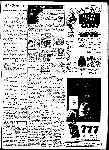
 trove.nla.gov.au
trove.nla.gov.au
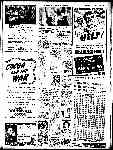
 trove.nla.gov.au
trove.nla.gov.au
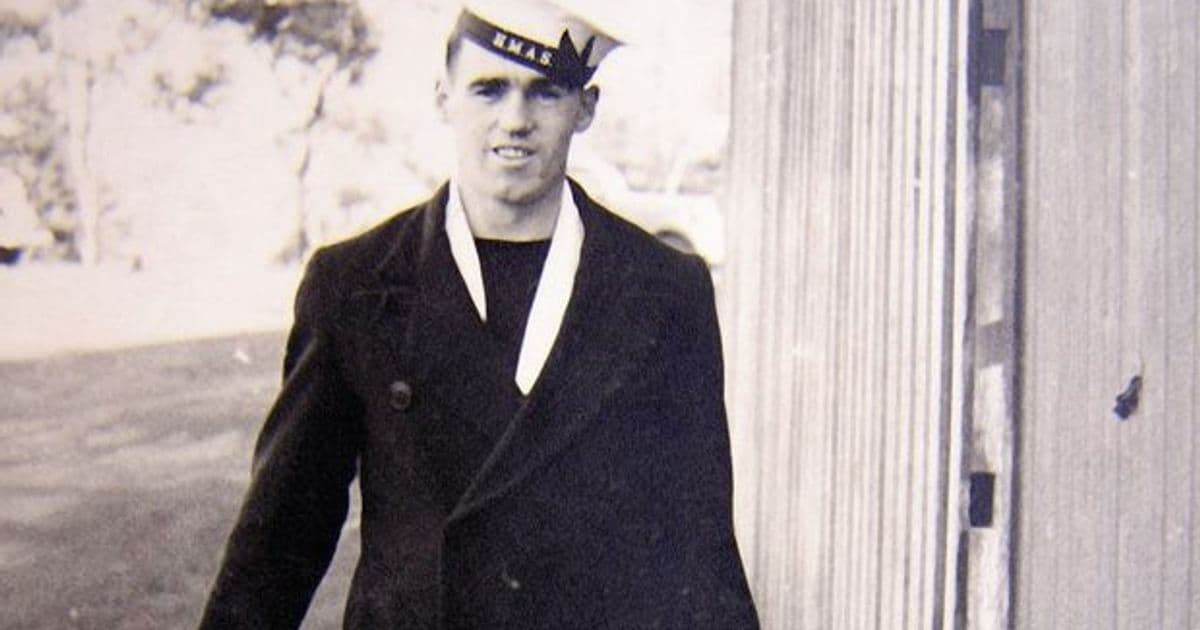
 www.carltonfc.com.au
www.carltonfc.com.au

The BOYS[?]WRITE HOME - The Mercury (Hobart, Tas. : 1860 - 1954) - 5 Jan 1942
"THIS last week has been one I'll never forget"—the week in which Signalman Ernie Pilkington, of the Royal Australian Navy, was an eye-witness of the sinking of ...
Hobart Man's Story Of Last Fight Of The Vampire - The Mercury (Hobart, Tas. : 1860 - 1954) - 19 Jun 1942
PICKED up by a hospital ship after having been six hours in thc water, Sig. E. Pilkington, son of Mr. and Mrs. T. P. Pilkington. ...

Surviving the sinking – Ernie’s incredible story
The story of former Carlton trialist Ernie Pilkington, who survived the sinking of the Vampire in April 1942.
Last edited:
Great dramas sporting globe 1937
There is a dozen of these articles on
various subjects (interstate finals VFA)
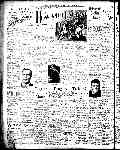
 trove.nla.gov.au
trove.nla.gov.au
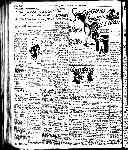
 trove.nla.gov.au
trove.nla.gov.au
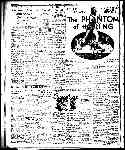
 trove.nla.gov.au
trove.nla.gov.au
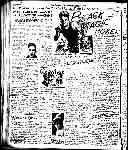
 trove.nla.gov.au
trove.nla.gov.au
There is a dozen of these articles on
various subjects (interstate finals VFA)
NORTH BROKE-BUT THEY WON WITH 18 AMATEURS - Sporting Globe (Melbourne, Vic. : 1922 - 1954) - 15 May 1937
Smugly confident they came, this band of well-trained -and well-paid — warrior, of Footscray, the proud Ieaders, for the formality of delivering a crushing knock-out to the poor poverty-stricken North Melbourne team, in the second ...
Great Football Dramas—No. 5 - WHEN TERRIFIC HAILSTORM BURST AT HALF-TIME' 1921 Final Was Most Amazing Of All - Sporting Globe (Melbourne, Vic. : 1922 - 1954) - 25 May 1935
Retold by an eye-witness, this is the fifth of a series of great football dramas. It describes how that phenomenal hailstorm at half-time upset the 1921 League final, between Richmond and Carlton, and the extraordinary scenes at the M.C.C. ground. ...
Great Football Dramas.—No. 13 - Fitzroy First To Smash Collingwood’s Great System - Sporting Globe (Melbourne, Vic. : 1922 - 1954) - 20 Jul 1935
How Collingwood's famous system, then brand-new, was first smashed by Fitzroy in a memorable League semi-final in 1902, is retold in this, the thirteenth of a series of great football dramas. ...
Great Football Dramas-No. 3 - WHEN CARLTON SMASHED COLLINGWOOD MACHINE - Sporting Globe (Melbourne, Vic. : 1922 - 1954) - 11 May 1935
Retold by an eye-witness, this is the third of a series of stories of great football dramas. It describes how in the hectic 1931 League semi-final, Carlton's shock tactics smashed the mighty Colling wood "machine." THE blakest day in the colorful ...
Last edited:
Port Neil (SA) 1947

Brunswick Ground 1952
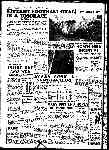
 trove.nla.gov.au
trove.nla.gov.au
Pipes for football
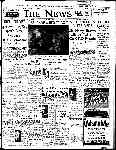
 trove.nla.gov.au
trove.nla.gov.au
Mission to spread football to the world.....
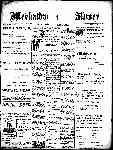
 trove.nla.gov.au
trove.nla.gov.au

Brunswick Ground 1952
FITZROY FOOTBALL OVAL IS A DISGRACE - HOW ABOUT IT? - Sporting Globe (Melbourne, Vic. : 1922 - 1954) - 2 Jul 1952
The conditions prevailing at the Fitzroy Football Ground are a disgrace to the Fitzroy Cricket Club, the Victorian Football League, and an insult to football patrons. ...
Pipes for football
Search in Desert For Port Guernsey - News (Adelaide, SA : 1923 - 1954) - 22 Jun 1939
When Port Adelaide footballers are crossing the continent towards Perth late in July, the secretary (Mr. Charles Hayter) will be on the look-out for a native wearing a Port guernsey with No. I on the back. ...
Mission to spread football to the world.....
Football. - Meekatharra Miner (WA : 1909 - 1918) - 23 May 1914
A Melbourne writer says :—“ Jim Smith, the old St. Kilda follower, who has lately devoted his time in teaching the young idea how to ...
Last edited:
Similar threads
- Replies
- 3
- Views
- 1K











